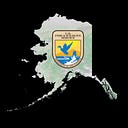Alaska’s Seabirds
Seabirds
A photographic journey along Alaska’s coast and marine habitats
Feeding
Seabirds depend on the world’s oceans for food and spend most of their lives at sea. They draw sustenance from the entire water column — from the bottom of the ocean to its surface, feeding from the lowest zooplankton link in the food chain to fish near the top, and some scavenge as well.
Seabirds from all over the world come to Alaska to partake in productive marine feeding grounds situated over large continental shelves and bordered by thousands of miles of varied, undeveloped coastline.
Breeding
Seabirds may spend most of their life at sea, but they must return to shore to breed and raise their young. Alaska’s seabird breeding colonies — and National Wildlife Refuges — offer some of the most amazing spectacles and viewing opportunities in the world.
Twelve species of seabirds nest in the Pribilofs (referred to by some as the “Galapagos of the North”) including the rare Red-legged Kittiwake (above). The soaring cliffs of St. George Island alone host one of the largest seabird colonies in the northern hemisphere with a staggering 2+ million birds.
‘indicators of ocean conditions’
That’s how avian scientists refer to seabirds. The food items that seabirds feed their chicks, their reproductive success, or numbers in attendance at colonies can all be indicators of what is happening in the ocean. Die-off events indicate something has changed at sea. One of the usual suspects: starvation and changes in the marine food web. Read more: “Sea Change in the High North”
Connecting us
Once they’re ready, the seabirds fledged in Alaska take flight — Glaucous Gulls north to the circumpolar regions atop the world, auklets west to Russia’s coastal seas, kittiwakes south to the North and Central Pacific, and even Antarctica (Arctic Terns). Others, like albatross and shearwaters, breed elsewhere but come to Alaska to feed. They literally link these places together, their fate dependent upon rich patches of prey in the oceans between.
Compiled by Katrina Liebich, Alaska Digital Media Manager for the U.S. Fish and Wildlife Service, with Migratory Birds Management staff.
In Alaska we are shared stewards of world renowned natural resources and our nation’s last true wild places. Our hope is that each generation has the opportunity to live with, live from, discover and enjoy the wildness of this awe-inspiring land and the people who love and depend on it.
